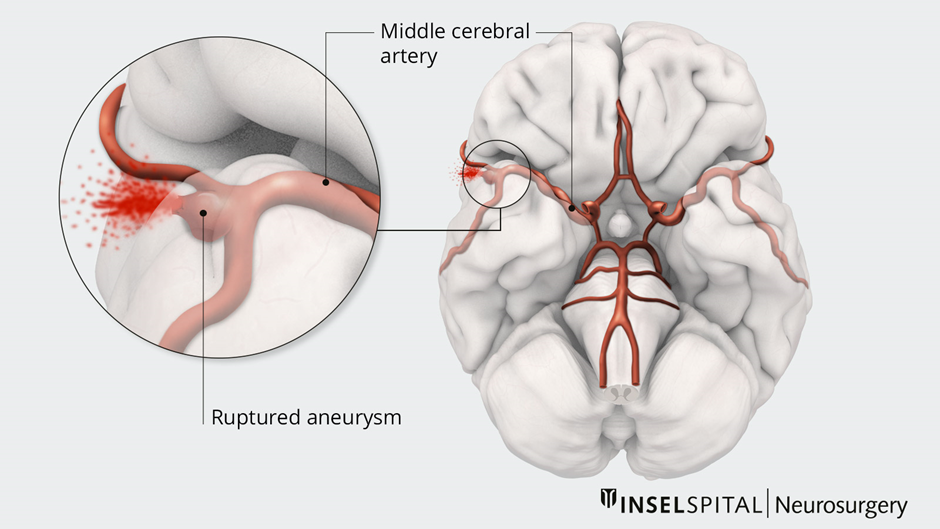A nurse is providing care for a client who is at risk of cerebral aneurysm rupture. Which of the following interventions should the nurse include in the care plan?
Keep lights turned to medium level in the evening.
Maintain the head of the bed between 30 and 45°.
Administer hypotonic intravenous solutions.
Reposition the client every shift.
The Correct Answer is B
Choice A Reason:
Keeping lights turned to medium level in the evening is incorrect. This intervention is aimed at reducing environmental stimuli, which may be appropriate for some patients with neurological conditions to minimize sensory overload and promote rest. However, it is not a specific intervention for preventing cerebral aneurysm rupture.
Choice B Reason:
Maintaining the head of the bed between 30 and 45° is correct. Keeping the head of the bed elevated can help reduce intracranial pressure and decrease the risk of cerebral aneurysm rupture or rebleeding in patients with aneurysmal subarachnoid hemorrhage. This position promotes venous drainage from the brain and helps prevent increases in intracranial pressure.
Choice C Reason:
Administering hypotonic intravenous solutions is incorrect. Hypotonic intravenous solutions have a lower osmolarity than blood plasma and can lead to cerebral edema, which may exacerbate intracranial pressure and increase the risk of cerebral aneurysm rupture. Isotonic solutions, such as normal saline (0.9% NaCl) or lactated Ringer's solution, are typically preferred for fluid resuscitation and maintenance in patients at risk of cerebral aneurysm rupture.
Choice D Reason:
Reposition the client every shift is incorrect. Repositioning the client every shift helps prevent complications associated with immobility, such as pressure ulcers, pneumonia, and venous thromboembolism. While important for overall patient care, repositioning alone does not directly address the risk of cerebral aneurysm rupture.

Nursing Test Bank
Naxlex Comprehensive Predictor Exams
Related Questions
Correct Answer is B
Explanation
Choice A Reason:
Chronic obstructive pulmonary disease (COPD) is inappropriate.COPD is a chronic lung disease characterized by airflow limitation. While COPD does not directly cause spinal stenosis, some individuals with COPD may have comorbidities or risk factors, such as osteoporosis or degenerative changes in the spine, which can contribute to spinal stenosis.
Choice B Reason:
Laminectomy is appropriate. A laminectomy is a surgical procedure used to decompress the spinal cord or nerves by removing the lamina (back part of the vertebra). While a laminectomy can be a treatment option for spinal stenosis, it is not a risk factor for developing the condition.
Choice C Reason:
Hysterectomy is inappropriate. Hysterectomy, the surgical removal of the uterus, is not directly associated with spinal stenosis. However, certain conditions or factors leading to a hysterectomy, such as pelvic tumors or endometriosis, may indirectly contribute to spinal stenosis if they cause changes in the spine or affect posture.
Choice D Reason:
Hyperthyroidism is appropriate. Hyperthyroidism, a condition characterized by excessive production of thyroid hormones, is not a known risk factor for spinal stenosis.
Correct Answer is D
Explanation
"The nerves just go to sleep when I lie down because no message gets from my brain to the spinal cord." is incorrect because it does not accurately describe the mechanism of peripheral neuropathy. Peripheral neuropathy in diabetes is not simply the nerves "going to sleep" due to lack of communication between the brain and spinal cord.
Choice B Reason:
"The nerve damage may occur for unknown reasons in any individual" is incorrect because while the exact cause of peripheral neuropathy may not always be known, in the context of diabetes mellitus, the link between elevated blood sugar levels and nerve damage is well-established.
Choice C Reason:
"The older I get, there is less blood flowing to my feet. “is incorrect because while decreased blood flow (ischemia) can contribute to peripheral neuropathy in some cases, the primary mechanism in diabetic neuropathy is nerve damage due to hyperglycemia rather than reduced blood flow.
Choice D Reason:
"The elevated blood sugar from my diabetes can cause underlying nerve damage." Peripheral neuropathy is a common complication of diabetes mellitus, particularly when the condition is uncontrolled. Elevated blood sugar levels over time can lead to damage to the nerves, especially those in the feet and legs. This damage can result in symptoms such as numbness, tingling, burning sensations, or pain in the affected areas.
Whether you are a student looking to ace your exams or a practicing nurse seeking to enhance your expertise , our nursing education contents will empower you with the confidence and competence to make a difference in the lives of patients and become a respected leader in the healthcare field.
Visit Naxlex, invest in your future and unlock endless possibilities with our unparalleled nursing education contents today
Report Wrong Answer on the Current Question
Do you disagree with the answer? If yes, what is your expected answer? Explain.
Kindly be descriptive with the issue you are facing.
